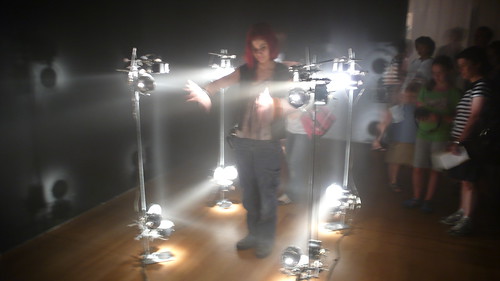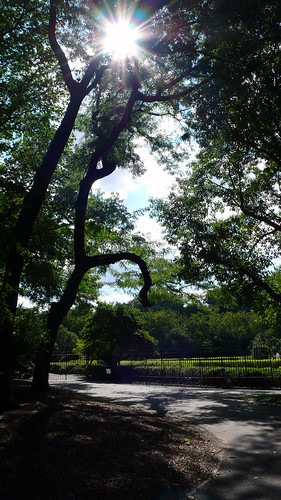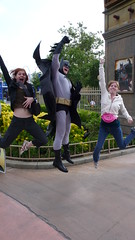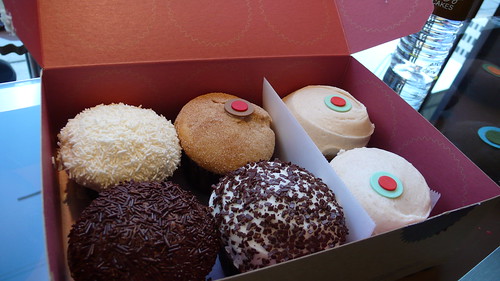I had used pro digital SLRs, but they were always owned by the company I was working for. Borrowing the camera for personal projects was never a problem, so I had no need to buy one myself. Now that I'm not working as a commercial photographer, last year I thought it about time to get myself a little something something. SLRs are great, but bulky, so I decided on a point-and-shoot which I could take with me on outings and trips and the like. But of course, I couldn't get just any P&S, I had to get a super-fancy one.
Here's the clever part. Leica create—in my opinion and many others—the greatest cameras. Period. I've wanted one for, ever. So when I was looking into Leica P&S cameras, I learned that Panasonic makes their digital cameras, using Leica components. So looking at the Leica D-LUX 3, you find the Lumix DMC-LX2.


The Lumix DMC-LX2 to the left (the pic is silver, but my camera is black), the Leica D-LUX 3
to the left (the pic is silver, but my camera is black), the Leica D-LUX 3 to the right. They're the same camera. Except the Lumix is about $300 cheaper. And has a little grippy thing. Otherwise it has the exact same components. Same high-end Leica lens, same CCD, same image processing. Did I mention they're the same? And the Lumix is way cheaper? Not even like, similar. MADE BY THE SAME COMPANY(s).
to the right. They're the same camera. Except the Lumix is about $300 cheaper. And has a little grippy thing. Otherwise it has the exact same components. Same high-end Leica lens, same CCD, same image processing. Did I mention they're the same? And the Lumix is way cheaper? Not even like, similar. MADE BY THE SAME COMPANY(s).
So yeah. Love my LX2. Takes awesome photos.





That's enough of that. For a P&S, it's amazing. Awesome lens. Optical image stabilization (meaning the lens floats a bit and corrects for camera shake to an extent). Manual focus. RAW files. Widescreen CCD (not just a cropped square CCD). 10MP. The list goes on and on.
Now, for the not so happy things. It doesn't do well in low light (the next model up, released after I bought mine, is supposed to fix this and everything else I have quips with). It tends to add noise and look "processed." So effectively I only use it at ISO100. This is mostly due to 10MP CCD on a P&S. More pixels is not necessarily better. In fact, smushing more pixels into a small CCD means less quality per pixel, overall. So, zooming in to 100% of an image can often reveal limitations. At typical viewing and printing size, none of this is an issue, because the image is resized down and you don't see the imperfections. BUT: when shooting product shots, like I do for Sunshine Cupcake, I get issues.

Which when cropped, becomes this:
Now, for the not so happy things. It doesn't do well in low light (the next model up, released after I bought mine, is supposed to fix this and everything else I have quips with). It tends to add noise and look "processed." So effectively I only use it at ISO100. This is mostly due to 10MP CCD on a P&S. More pixels is not necessarily better. In fact, smushing more pixels into a small CCD means less quality per pixel, overall. So, zooming in to 100% of an image can often reveal limitations. At typical viewing and printing size, none of this is an issue, because the image is resized down and you don't see the imperfections. BUT: when shooting product shots, like I do for Sunshine Cupcake, I get issues.
P&S macro is hit and miss. They tend to have a longer minimum focal distance. Meaning, the camera and lens need to be further away from the subject before it can focus clearly than an SLR with a larger lens needs to be. So getting up close and personal with little clay dudes or buttons 1" tall means I have to set up my tripod (no problem), zoom in to the maximum optical zoom of 4x, and then still be over a foot away from the product. So I end up getting a little bitty button in the middle of a huge frame. Case in point:

Which when cropped, becomes this:


No comments:
Post a Comment